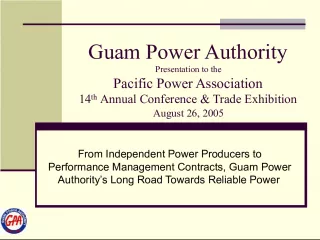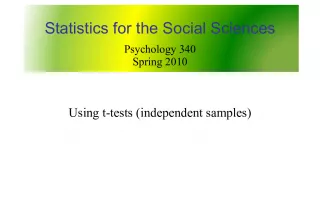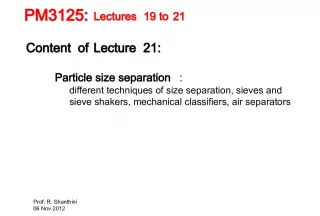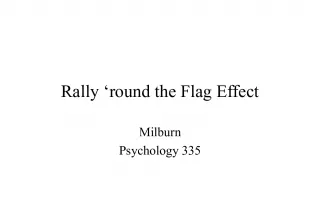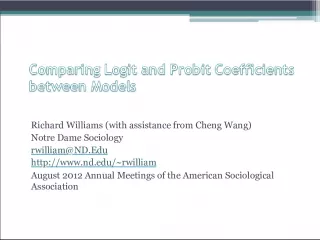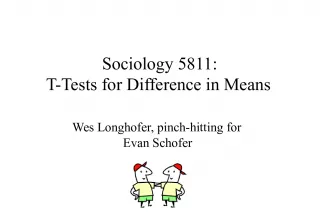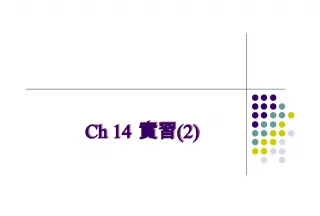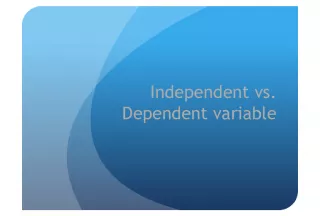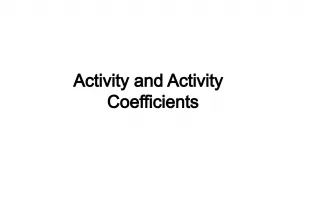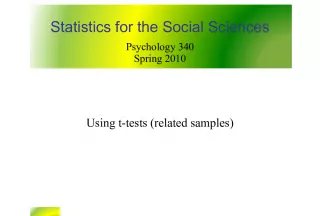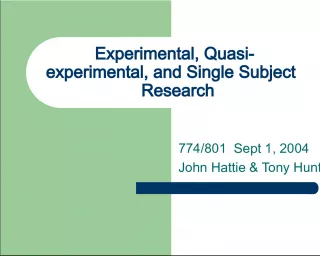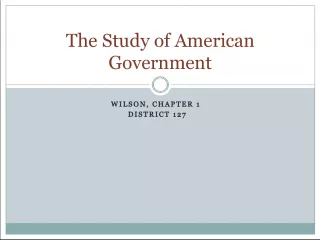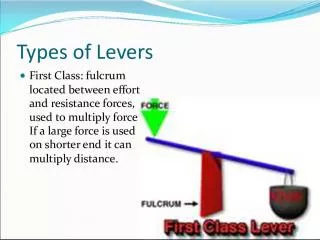The t Test for Independent Means: Effect Size and Power Analysis


This chapter focuses on estimating effect size using S pooled and interpreting it using Cohen's guidelines, as well as calculating the power of a t test for independent means with a significance level of 0.05 and equal group sizes. Table 8.5 is used to find the study's power given the sample size and effect size.
- Uploaded on | 1 Views
-
 donella
donella
About The t Test for Independent Means: Effect Size and Power Analysis
PowerPoint presentation about 'The t Test for Independent Means: Effect Size and Power Analysis'. This presentation describes the topic on This chapter focuses on estimating effect size using S pooled and interpreting it using Cohen's guidelines, as well as calculating the power of a t test for independent means with a significance level of 0.05 and equal group sizes. Table 8.5 is used to find the study's power given the sample size and effect size.. The key topics included in this slideshow are t test, independent means, effect size, power analysis, S pooled, Cohen's guidelines, significance level, sample size, Table 8.5,. Download this presentation absolutely free.
Presentation Transcript
1. Chapter 8 The t Test for Independent Means Part 2: Oct. 7, 2014
2. Effect Size for the t Test for Independent Means If need to estimate effect size after a completed study, use: S pooled = pooled estimate of SD (see Part 1 notes) Use Cohens guidelines to interpret: around .2 or -.2 small, around .5 or -.5, med, around .8 or -.8, large
3. Power for the t Test for Independent Means (.05 significance level) Use Table 8-5 to find studys power, given sample size, # tails, effect size (see previous formula) Note: Assumes Equal group sizes
4. Power for the t Test for Independent Means Table 8-5 assumed equal group sizes Power when sample sizes are not equal Harmonic mean gives equivalent sample size for how much power youd have w/2 equal samples Can then use Power Table w/this as mean
5. Harmonic Mean Example Example from pt 1 notes (TV/radio news), we had N 1 = 61, N 2 = 21 What is the harmonic mean here? What is its interpretation? Note we actually had 82 participants, but how much power did we have?
6. Harmonic Mean (cont.) **Main point try to get equal group sizes, otherwise youre penalized in terms of power Once you find harmonic mean, can use that as group size in Table 8-5
7. Approximate Sample Size Needed for 80% Power (.05 significance level) Use Table 8-6 if need to plan sample size. Need to know estimated effect size and # tails
8. Assumptions of Ind T-test 1) Each of the population distributions (from which we get the 2 sample means) follows a normal curve 2) The two populations have the same variance This becomes important when interpreting Ind Samples t using SPSS SPSS provides 2 sets of results for ind samples t-test: 1 st assumes equal variances in 2 groups 2 nd assumes unequal variances You have to check output to see which of these is true SPSS provides Levenes test to indicate whether the 2 groups have equal variance or not. use the results for either equal or unequal variances (depending on results of Levenes test)
9. SPSS example Analyze Compare Means Independent Samples t Pop up windowfor Test Variable choose the variable whose means you want to compare. For Grouping Variable choose the group variable After clicking into Grouping Variable, click on button Define Groups to tell SPSS how youve labeled the 2 groups
10. (cont.) Pop up window, Use Specified Values and type in the code for Group 1, then Group 2, hit continue For example, can label these groups anything youd like when entering data. Are they coded 0 and 1? 1 and 2?etc. Specify it here. Finally, hit OK See output example in class for how to interpret
11. SPSS Output for Ind T-test 1. Group Statistics section at top reports means for the 2 groups 2. Independent Samples Test section reports both Levenes test and the actual t-test: First, check Levenes test to determine whether the Null Hypothesis (the 2 groups have equal variances) is rejected or not. So, to meet the t-test assumption, we want to fail to reject this null If not, we can still interpret t, but need to use adjusted stats
12. Under the Levenes test section, if Sig is < .05 (or your alpha level), REJECT Null assumption of equal variances & interpret remaining output labeled Equal variances NOT assumed But if Sig is > .05, we fail to reject Null assumption of equal variances & interpret the line labeled Equal variances assumed Next, interpret t-test for equality of means. Now the null states that the 2 group means are equal. Notice t is your t observed, its df, and sig value. If sig < .05 reject Null stating group means are equal; conclude the 2 group means differ significantly Go back to info on which group mean is higher/lower to interpret. If sig > .05, fail the reject Null, conclude group means are equal
